Indoor and garden euonymus, its features, planting and care
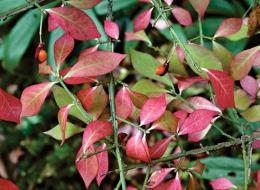
Having seen at least once the most beautiful euonymus bush, every amateur gardener is eager to plant the same miracle of nature on his plot or at home. But looking at such beauty, it seems that growing and preserving a long life for this beautiful plant will not be so easy; most likely, it, like all extraordinary vegetation, is too whimsical and delicate. But no!
Despite all its extraordinary nature, Euonymus is quite survivable and resilient, it can easily tolerate both hot summers and cold winters, and it can be grown on almost any continent of our globe.
Content:
- What does the plant look like?
- Popular varieties of euonymus
- Indoor and garden euonymus: what you need to know?
- Pests and diseases
What does the plant look like?
Euonymus is a woody plant of the Euonymus family, has more than two hundred species, divided into small trees and shrubs, including deciduous and evergreen. The height, under natural conditions, reaches seven meters, in gardens up to 2-4 meters, and at home even less.
The euonymus genus grows mainly in mixed and deciduous forests of temperate subtropical climates; it is also found in the tropics, but not so often and only places in the cold northern regions are a complete exception.
The leaves look ordinary, smooth, but in the autumn they become especially beautiful, each leaf has the ability to be painted in a diverse color palette, including yellow, white, purple, red and orange shades, which leaves no one indifferent!
It blooms with small greenish flowers, from which fruits later appear that look like hanging boxes or paper lanterns, with seeds hidden inside them. The color of the boxes most often ranges from light pink to dark purple, sometimes red-brown, it all depends on the species. The structure is dry, leathery, the capsule is four-parted.
All parts of this plant are poisonous to both humans and animals, but despite this, some species are used for medicinal purposes.
Carefully! Do not use it as a treatment without consulting a doctor!
Popular varieties of euonymus
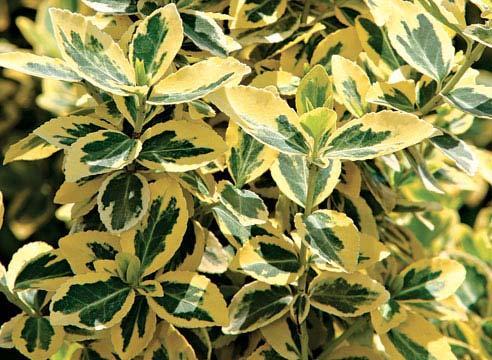
Among all the variety of species, there are special varieties used for cultivation in our climate, there are about twenty of them, in the list below we will consider some of them:
- Japanese
- warty
- European
- dwarf
- winged
- Semenov's euonymus
- Fortune's euonymus
Japanese refers to evergreen shrubs and practically the only variety suitable for growing indoors. The height reaches a meter, the leaves are about 8 cm. In addition to its beauty, it has another important, useful feature - the ability to purify the air in the room.
Indoor and garden euonymus: what you need to know?
How to plant and care for euonymus? Let's take a closer look.
- Landing. At home, it must be planted in a water-retaining soil mixture, as euonymus prefers moderate moisture. In the garden, you can plant it in ordinary, fertile soil, previously dug up and mixed with compost. Important.Planting should only be done in autumn or spring. If the soil is too dense (heavy), mix it with sand. The selected location should not have groundwater.
- Watering in summer and winter. Water for irrigation should be left to stand for at least 24 hours. In spring and summer, you need to water abundantly, not allowing the soil to dry out completely, but the water in the pot should not stagnate; it is especially important to monitor this in winter. In the cold season, watering should be reduced; acidification of the soil will have a detrimental effect on the plant. In natural conditions, no special care is required. In summer, water abundantly, especially young shrubs, and in winter, avoid watering completely.
- Lighting. Although euonymus shade-tolerant plant, but very light-loving, so the lighting in the room where it grows should be bright, it is not afraid of direct sunlight, and even, on the contrary, thanks to the sun its growth and leaf saturation improves. But this does not mean that in dimmer light it will disappear; it will grow in the northern part of the house, just the development process will be slow, and the leaves may lose their brightness. To plant outside, feel free to choose the sunniest place, less shade, more light, that’s what you need, first of all! But there are exceptions; some varieties should be planted in shadier places.
- Temperature in summer and winter. The temperature in the warm season should not exceed 25 °C; it would be useful to take it out into the fresh air, for example, onto a balcony or terrace. In general, euonymus is not particularly picky about temperatures; it can withstand both cold and heat equally, but in winter it is best to reduce it to 8 - 10 °C. If the plant has to overwinter in hotter temperatures, its leaves may completely fall off.Garden euonymus trees and shrubs are hardier than indoor ones; they can easily withstand frosts down to -25 °C, so the only thing that may be required is to wrap the plant for the winter.
- Humidity. It is no more picky about humidity than it is about temperature, but you should still spray it, this will help prevent the appearance of pests and will only be beneficial. Spraying should be carried out only with settled or boiled water (not hot!).
- Feeding. It should be fed in spring and summer with complex mineral fertilizers, no more than once a month, after watering.
- Shaping and trimming. Pruning is carried out throughout the year as the shoots dry out. If there are weak branches, they should also be pruned so that the strength of the plant is not taken away in vain. Everyone can give it a shape according to their own taste and preference. With desire and hard work, you can even grow a bonsai from an euonymus.
- Transplantation. For the first five years, the euonymus is transplanted every year into a slightly larger pot; then it will need replanting less and less, once every three years.
The composition of the soil can be from the following components:
- turf land
- sand
- peat
- humus
- leaf soil
Advice. To prevent stagnation of water in the pot, fill the very bottom with expanded clay or broken bricks; such a drainage layer will protect the plant from rotting, especially in winter.
The street tree does not need to be replanted, but if the location is not suitable, it should be replanted in the spring. Mature bushes, older than 5 years, are better not to replant at all.
How to propagate a miracle bush?
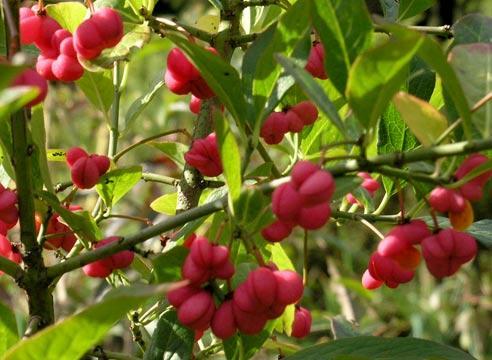
There are three ways to propagate euonymus:
- vegetatively (division)
- cuttings
- seeds
All three methods are suitable for both indoor and garden plants of this type. In the first case, propagation takes place during transplantation; carefully, without damaging the roots, the branches of the plant are separated and planted in separate pots. No special care is required for this type of reproduction.
In the second case, young shoots up to 5 - 6 centimeters long with at least a couple of nodes are cut and rooted in separate containers with previously prepared soil. Next, place the container in a warm place and cover it with glass.
Important. The container should be shallow, the cuttings are cut around the end of June, and the glass should be periodically removed in order to ventilate and spray the young plant.
Propagation by seeds takes much longer than by cuttings and division. The entire process takes about seven months of hard work. Before seeds become suitable for planting, they must undergo a stratification process, which consists of several stages:
- creating an artificial wintering area (so that the seed coat falls off)
- keeping seeds at temperatures from 0 to 4 °C
- seed treatment
- planting in special soil for sprouts to appear
Pests and diseases
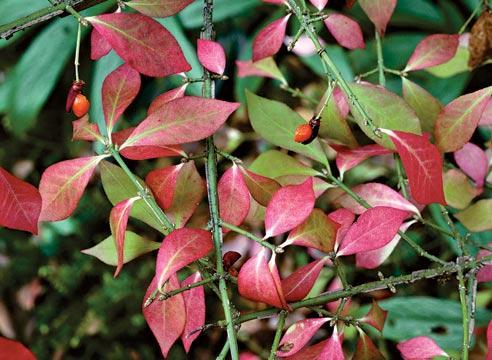
If the color of the leaves has become dull, losing its saturation, and the bush itself is growing very slowly, it may not have enough proper lighting. The leaves turn yellow and fall off - too much watering. If this problem is not identified in time, the roots will begin to rot and the bush will disappear.
If green leaves fall off, then the problem may be too high a temperature and dry air. This often happens in winter.
The leaves dry out, lose their color and crumble, and brown plaques appear on the surface; the reason is - scale pestsAnd.The bush needs to be treated with a special solution. When a spider mite appears, you should treat the bush with a soapy solution, for example, wiping it with a sponge soaked in it and dousing it with a warm shower.
The appearance of white dots indicates a red flat mite. Remove damaged leaves before it spreads and begins to damage your plant.
As you can see, euonymus is very unpretentious, hardy and easy to care for. Having decided to plant it on your site, you will not need to spend a lot of time and effort, as is often the case with other plants. And its extraordinary beauty will delight the eye for more than one day, especially in the fall.
Interesting video about garden euonymus:
Interesting information about the vegetable garden

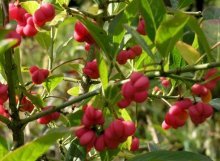
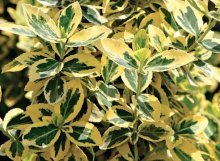
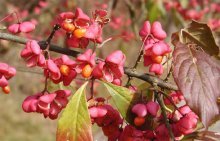
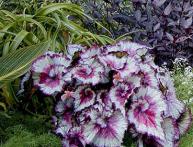
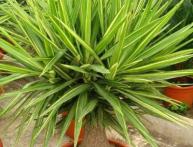
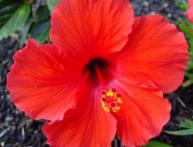
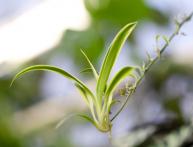
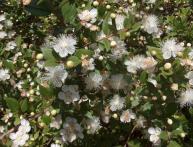
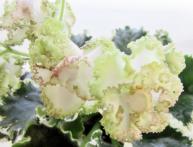
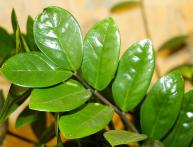

Comments
Euonymus is very beautiful, the plant will decorate any garden plot, especially since its survival rate is good.